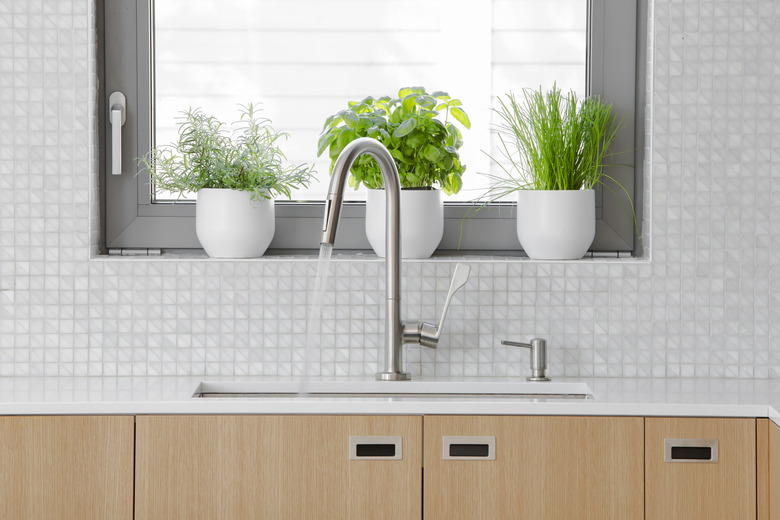How To Fix Whistling Water Pipes
We may receive a commission on purchases made from links.
Whistling while you work might be a great way to keep your spirits up, but you don't want your plumbing pipes to whistle while they work. Your home's plumbing system is intricate with lots of different parts, and a lot of things can go wrong. Hearing strange sounds is common but don't ignore them. Digging into the cause of whistling can help you identify and fix a problem before it gets worse.
Causes of Whistling Pipes
Causes of Whistling Pipes
Whistling usually happens when the water pressure is too high, often because the opening is too small for the water that's being pushed through. This can happen if the plumbing pipes are improperly sized, but it can also happen if the pipes have degraded over time. One example is mineral buildup inside your pipes that narrows the opening and prevents the water from moving through properly. Sometimes, the water pressure entering your home is simply too high. If the whistling only happens with one fixture, it could be an issue with buildup in the aerator.
Test the Water Pressure
Test the Water Pressure
By checking the water pressure, you can determine if the pressure is too high coming into the house or if there's another situation that's affecting the pipes. You can get a simple water pressure gauge that screws onto the outdoor hose faucet that's closest to your main water supply. When you test the water pressure, make sure all other water fixtures are off and turn on the hose.
Home water pressure should fall between 45 and 80 psi. If it's above 80 psi, it's dangerously high and can damage pipes and plumbing fixtures. Water pressure in the middle of the range is ideal so that it's high enough to work well but not so high that it causes damage. If it's on the higher end of the range, lowering the pressure can help.
Reduce the Water Pressure
Reduce the Water Pressure
A water pressure regulator on the main water supply line coming into your home lets you adjust water pressure up or down. If you already have one installed and you suspect high water pressure is causing the whistling, adjust the settings to lower the pressure. This simple device uses an adjusting screw, which is secured with a locking nut that you must use an adjustable wrench to loosen. Then, turn the adjustment screw counterclockwise to decrease the water pressure.
A plumber might be necessary to help with the process. If adjusting the water pressure regulator doesn't seem to help, it might be bad. A licensed plumber can replace it and adjust it correctly. If your home doesn't have a water pressure regulator, consider hiring an electrician to add one so you can control the water pressure coming into your home.
Replace Clogged Pipes
Replace Clogged Pipes
If you have older pipes that have severe buildup inside, they could be decreasing the space through which the water travels, causing the whistling sound. Areas with hard water are particularly susceptible to this issue since the minerals in the water can build up inside the pipe. Cleaning buildup out of water supply lines isn't practical. If the pipes are older anyway and are clogged, having them replaced is usually the best solution.
Clean or Change the Aerator
Clean or Change the Aerator
Sometimes, the mineral deposits build up in the aerator on a sink or tub faucet. This can create a squealing or whistling sound at that specific fixture. You might also notice that the water stream is slower or doesn't flow normally from that faucet because of the deposits.
To clean an aerator, unscrew it from the faucet and soak it in white vinegar for an hour or so. You can let it soak overnight if it has lots of mineral buildup. Use a toothbrush if necessary to clean the aerator. You can also replace it with a new one.
